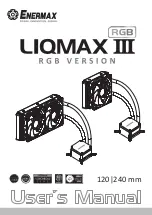
©
National Instruments Corporation
4-1
4
Programming
This chapter contains programming instructions for operating the circuitry
on the PCI E Series boards.
Programming the PCI E Series boards involves writing to and reading from
registers on the board. Many of these registers belong to the DAQ-STC,
and you will find a listing of these registers in the DAQ-STC Technical
Reference Manual. For a list of all board registers not on the DAQ-STC, see
Chapter 3,
, of this manual.
The programming steps for analog input, output, digital I/O, and timing
I/O are explained in the DAQ-STC Technical Reference Manual. These
operations are explained in terms of bitfields. A bitfield is defined as a
group of contiguous bits that jointly perform a function. Using bitfields has
the advantage of establishing an efficient mapping technique to the
underlying hardware. Also, the programming style becomes very modular,
and a functional description of every programming step is
easily understood.
Because the DAQ-STC Technical Reference Manual has detailed,
step-by-step programming instructions, this register-level programmer
manual gives a series of common programming examples with references
to the DAQ-STC Technical Reference Manual. The program for each
example is presented as it is in the DAQ-STC Technical Reference Manual;
that is, in terms of functions, with bitfields to be written for each function.
To implement the function, you need to perform a memory write to or a
memory read from the specified registers. The complete examples are
provided on the PCI E Series Register-Level Programmer Manual
Companion Disk.
PCl Local Bus
The PCI E Series boards are fully compatible with the PCI Local Bus
Specification, Version 2.1 from the PCI Special Interest Group (SIG). The
PCI Local Bus is a high performance, 32-bit bus with multiplexed address
and data lines. The PCI system arbitrates and assigns resources through
software, freeing you from manually setting switches and jumpers. You
















































